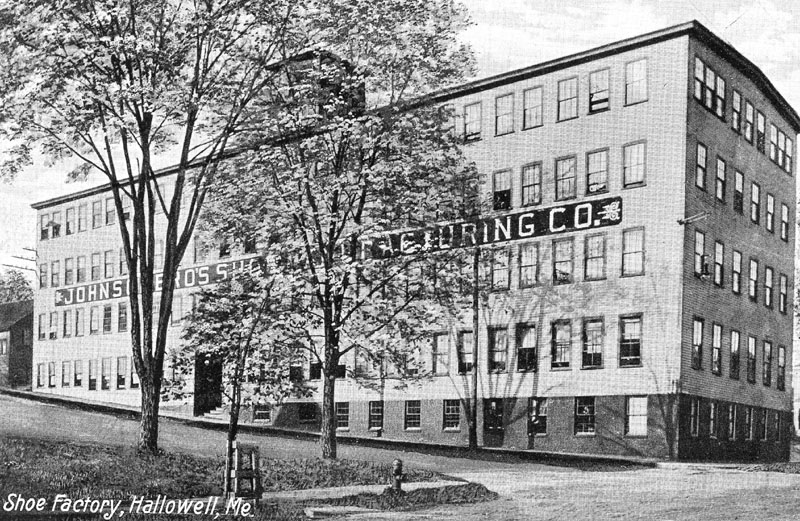In 1942, I was a teenager who needed a job and was eager to work.
As a high school freshman that summer, I took care of two children of Maude and Elmer Staples, who lived on Warren Street in Hallowell. I lived with my grandparents on the Outlet Road and rode my bicycle to and from work, rain or shine.
In the summer of 1944, I applied for a job at the Hallowell Shoe Factory. I was hired to work for cutting and stitching room boss Eddie Porter in the brick building that is now Cotton Mill Apartments. My job was cementing platform soles. During the summer of 1945, before my senior year in high school, I went back to work for Eddie Porter at the same factory, stitching platform soles.
Midway through the summer of 1945 my job took a new turn. My very good friend, Bertha Bradbury, who was already working at the office at Second and Central streets, heard they needed someone to assist the billing clerk, Annette Bourassa. I applied for the job and worked as the assistant billing clerk until my senior year started.
After graduation I started as full-time billing clerk because Annette was leaving to get married. I was promoted to head billing clerk and I worked alone. About this time the company moved the office from the fifth floor to the ground floor at the southeast corner, eliminating the need to climb four flights of stairs.
My salary was 87 cents per hour and later increased to $1, so my weekly pay was $38. I thought I was rich!
My day started at 8 a.m., when shoe orders would be placed on my desk. There were bundles of tags with rubber bands around them with bills of lading attached. These told me how many, the style, the sizes and the store they were being shipped to. It was my job to type all this information on bills sent to the stores. Some orders were as much as 48 cases or more.
Sometimes these bundles of tags reached across my desk, which was huge and made of oak.
The highlight each year was the Christmas party, which all factory workers looked forward to. The party was given by management, held at Hallowell City Hall from 2 to 6 p.m. and then later on the second floor of the brick factory. A boxed lunch and drinks were given by management and also a live band for dancing. Many brought their own “happy juice.”
It was time to let their hair down and, believe me, they were ready to party. The ladies dressed in their very best finery for the occasion. By the end of the day the party would become rowdy and was more than City Marshal Luther Gray and patrolman Percy Lee could handle. Around 11 a.m., the office staff held their own Christmas party in a different location with food and drinks furnished by management.
According to the book “Historic Hallowell,” up until 1953 the two factories were maintained. In 1953, the big machinery was moved to the brick factory, which is now the Cotton Mill Apartments. At that time the wooden factory on Second Street was vacated and in 1955 the building was torn down because it wasn’t safe.
The Hallowell Shoe Company continued on after it constructed a new one-floor factory on Whitten Road in Augusta. Many employees followed to work at the new building.
This building was later torn down and a Hannaford supermarket was built on the same spot.
Send questions/comments to the editors.



Success. Please wait for the page to reload. If the page does not reload within 5 seconds, please refresh the page.
Enter your email and password to access comments.
Hi, to comment on stories you must . This profile is in addition to your subscription and website login.
Already have a commenting profile? .
Invalid username/password.
Please check your email to confirm and complete your registration.
Only subscribers are eligible to post comments. Please subscribe or login first for digital access. Here’s why.
Use the form below to reset your password. When you've submitted your account email, we will send an email with a reset code.